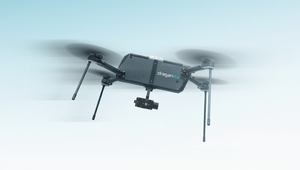Technology is Changing the Conversation Around Digital AccessibilityTechnology is Changing the Conversation Around Digital Accessibility
AI is helping to optimize every aspect of human-centric design through its ability to personalize experiences across channels

Discussions around "accessibility" tend to focus on the built environment, for instance, ramps and elevators for people with physical disabilities. But as more and more of our lives migrate onto the internet, attention is increasingly being paid to digital accessibility. Even before the U.S. Congress passed the Websites and Software Applications Accessibility Act in 2022, organizations were scrambling to optimize their websites for all users. Today, a staggering 98% of organizations say that human-centric design is important. And while it remains the case that only 59% of current applications fail to meet accessibility requirements, things on this front are quickly changing, in large part due to AI.
AI, of course, is helping to optimize every aspect of human-centric design through its ability to personalize experiences across channels. What these new accessibility initiatives point to is a deeper conception of personalization – not merely what a given consumer likes, but also how they move through the world. Do they have a sight impairment? Does a physical disability prevent them from navigating certain websites? The ability to answer these questions – and to personalize digital experiences accordingly – will be key to truly human-centric design strategies moving forward.
How exactly does AI assist with this?
We can start with the range of AI-facilitated tools that have emerged in recent years to help the visually impaired. Alt text is one notable example. With the click of a button, AI can now describe the content of on-site videos or images to those who would otherwise struggle to see them. We have also seen a proliferation of text-to-speech capabilities which matter not only for the visually impaired but also those with cognitive disabilities for whom reading is a challenge. These tools, simple to use on the consumer end, are facilitated by AI and the vast troves of data that power it—and they are already making life easier for untold millions of people.
But there are newer applications that in some ways are even more exciting. These circle back to the idea of personalization. The fact is that individual people build websites and will inevitably reflect their unconscious biases. This extends beyond how a website functions to every aspect of a website's design from stock photos to the behavior of chatbots. By leveraging AI, organizations can detect and mitigate this unconscious bias, cleansing biased language from datasets and helping to bolster demographic representation. Statistical techniques can also be used to recognize and address disparities in demographic representation. Open-source alternatives exist that can assess and mitigate “fairness” issues. And perhaps on a more basic level, AI can help organizations meet users where they are by helping to deliver content in local languages.
These efforts would matter even if they applied to just a small subset of people. But the reality is that they apply to many magnitudes more. According to the World Health Organization, 1.3 billion people globally currently experience a significant disability and that doesn't factor in those with temporary challenges like a broken arm. In other words, to neglect those with disabilities is to neglect over one-sixth of the global population. No organization can afford to do that, nor should any organization want to. Closing the accessibility gap will not be easy, but it is necessary work and AI has a central role to play in it.
This article first appeared in IoT World Today’s sister publication AI Business.
About the Author
You May Also Like
.jpg?width=100&auto=webp&quality=80&disable=upscale)
.jpg?width=400&auto=webp&quality=80&disable=upscale)

.jpg?width=700&auto=webp&quality=80&disable=upscale)
.jpg?width=700&auto=webp&quality=80&disable=upscale)
.jpg?width=300&auto=webp&quality=80&disable=upscale)


